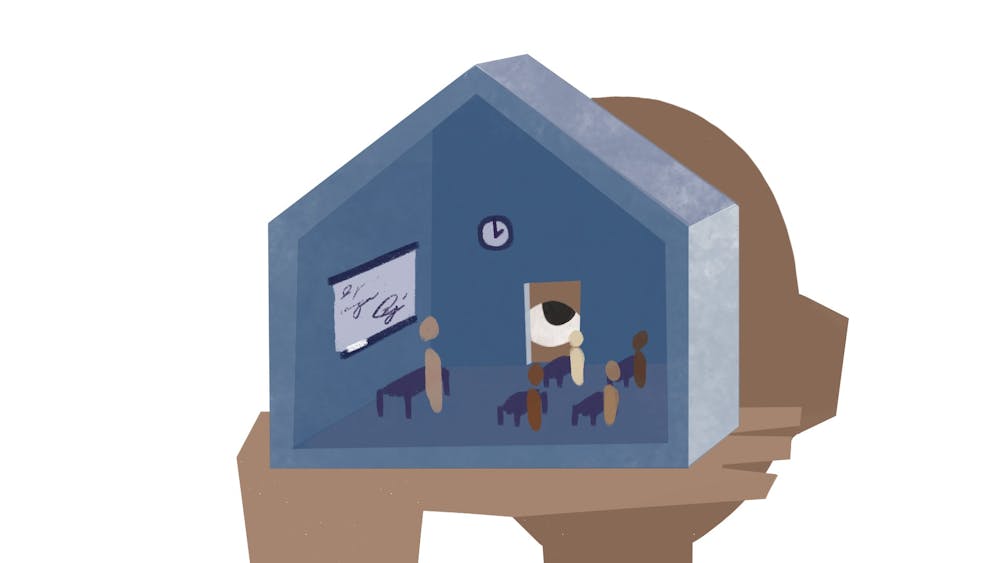A lunch period has just ended at a school in Philadelphia, and students pour into class. The room is full of sweaty children, but the other things you would expect from a classroom seem limited: the shelves lay relatively bare, chipped walls surround a muggy environment, and the ceiling is leaking.
Recent years have seen a significant increase in immigration to Philadelphia, far more than the numbers one can observe in other parts of Pennsylvania. Puentes de Salud, a nonprofit that promotes the wellness of Philadelphia’s Latinx communities through after–school programming and children’s literacy initiatives, can corroborate this. Alexandra Wolkoff, the organization’s education director, says that there has been an increase in minors and school–aged youth moving in from Central America. Any education system in tune to this information should ensure that resources are accessible to the diversity of students in the district. But rather than rising to the occasion, Pennsylvania seems to be actively resisting change.
The state has a long history of wealth inequality in its schools. A 2007 report by the Pennsylvania State Board of Education found that 95% of school districts fell short of adequate funding standards, including the City of Philadelphia. The school funding formula was revisited the following year, and adjustments were made that took base per pupil costs and the poverty levels of various districts into account, but the formula was ultimately abandoned only three years later as economic pressures caught up with the state government. This pivotal change occurred at around the same time immigration rates saw a marked uptick in urban areas.
Further budget cuts were made, and schools in low–income districts, many of which had significant immigrant populations, were the first to feel their effects. Now, the average student in Philadelphia is shortchanged $5,583 annually from what they need for a decent education, while students in wealthier districts have significantly more resources at their disposal. This inequity extends to the lack of community services and language–assistance resources for immigrant students.
Wolkoff affirms that the distribution of school funding is highly unequal in Philadelphia. In terms of educational resources for immigrant student populations in particular, she adds that while it’s great that Bilingual Counseling Assistants (BCAs), interpreters and translators, exist and can offer services for students who need extra help understanding the English instructors and material, it’s hard when they’re not paid enough to be there consistently. “We’ve seen for a lot of families that it creates an additional barrier … a sense of ‘I’m not immediately welcome here,’” she says.
The way Pennsylvania determines funding distributions is, in fact, uniquely discriminatory toward populations of immigrants in low–income areas; the state is heavily and almost solely reliant on local property taxpayers. Only 36% of public education funding comes from the state’s pocket, meaning that districts with higher property values thus have more available resources that can be funneled into important school necessities like painted walls, toilet paper, social workers or counselors, and BCAs.
In 2014, after being squeezed dry for years, six school districts in the state of Pennsylvania, two state organizations, and parents—including a Philadelphia mother—filed a lawsuit against the state’s Department of Education, asserting that this inequity was fundamentally contrary to the promises set under the state’s constitution of a “thorough and efficient system of public education.” In the last few months of 2021, the case has finally gone to trial.
Wolkoff prefaces that she’s neither a lawyer nor an economist, but she touches on a key point regarding the city's system of resource allocation: “The funding formula is messed up,” she says. “[Underserved students] not only deserve an equal share to other districts, but [should also] have access to what they’ve historically been denied as communities of color and communities of immigrants.” The new lawsuit, too, is critical of the existing system, bluntly stating that it’s an “irrational means of financing public education” in their case’s executive summary.
When asked if anything had been done by the Philadelphia School District in response to this case, Wolkoff mentions resolutions that are in the process of being adopted by the district in response to Puentes' Sanctuary School campaign, which aims to prioritize culturally conscious and responsive education and curriculum development. However, she goes on to address important next steps for the state: “That was a big win. But now I think the question is always … the actual implementation of these things.”
Implementation is at the forefront of the lawsuit’s demands, and this landmark case’s closing arguments—both from the defendants and the plaintiffs—are happening within the next few weeks. Despite equality being at the forefront of many state constitutions, including Pennsylvania’s, time and time again they’ve continuously failed underrepresented populations—the many communities that arrive in the United States for relief, shelter, or support. The American experience in our cities should neither be a sea of unfamiliarity for newcomers nor of apathy for the unfamiliar. As Wolkoff and those suing the state believe, it should be something else entirely: fair share of opportunity for all.







